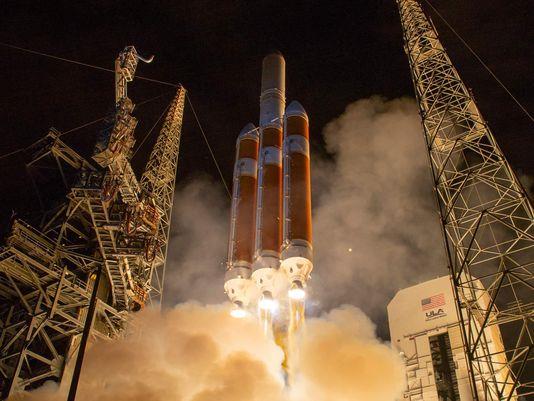WASHINGTON, Aug. 12 (Xinhua) -- NASA's Parker Solar Probe, the fastest spacecraft in history, blasted off atop a Delta IV Heavy rocket in the U.S. state of Florida on Sunday, on a mission to study the Sun at closer range than any other spacecraft.
The probe has started its journey to the Sun's fiery corona amidst brutal heat and radiation conditions.
The rocket was launched from Space Launch Complex 37 at the Cape Canaveral Air Force Station in Florida at 3:31 a.m. EDT (0731 GMT), carrying the small car-sized probe toward the Sun with a whopping 55 times more energy than is required to reach Mars.
It is humanity's first close visit to a star and will revolutionize our understanding of the Sun.
Zooming through space in a highly elliptical orbit, the Parker Solar Probe will reach speeds of up to 430,000 miles (690,000 km) per hour, fast enough to get from Washington to Beijing in less than one minute.
During its mission lifetime of under seven years, the probe will complete 24 orbits of the Sun and fly within 3.7 million miles (6 million km) of the Sun's surface at closest approach.





